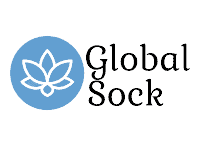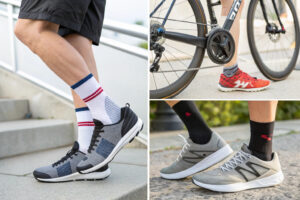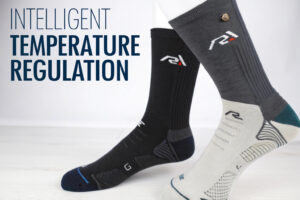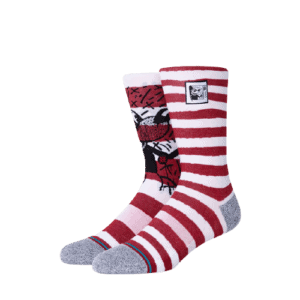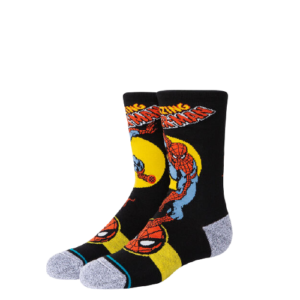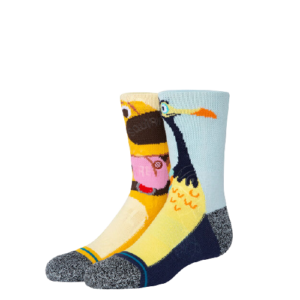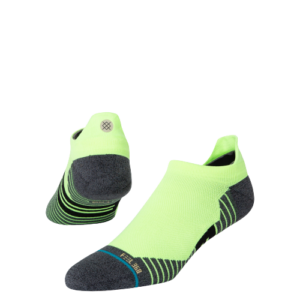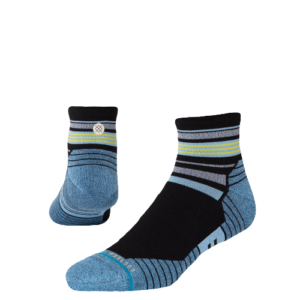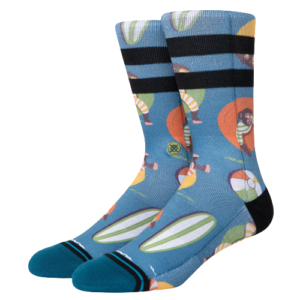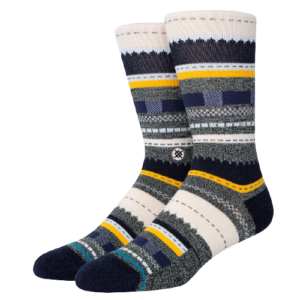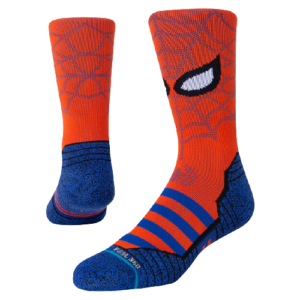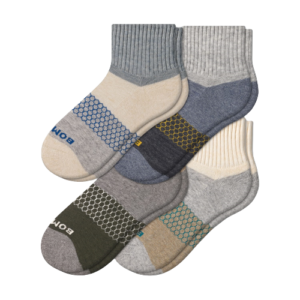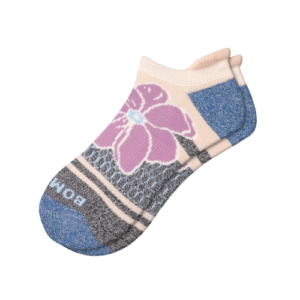As a socks manufacturer with over a decade of experience, I've seen countless trends come and go. But one category that continues to gain momentum is therapeutic footwear - specifically acupressure socks for reflexology. Many of our clients approach us with interest in this product category but lack clarity on how to effectively develop these specialized socks. The process requires careful consideration of both therapeutic principles and manufacturing expertise.
Acupressure socks with reflexology nodes represent a growing segment in therapeutic footwear, combining traditional healing principles with modern manufacturing techniques. These specialized socks feature precisely placed nodes that stimulate specific pressure points on the feet, promoting relaxation and potential health benefits. Proper development requires understanding reflexology maps, selecting appropriate materials, and implementing quality manufacturing processes to ensure both therapeutic effectiveness and comfort.
The growing wellness market has created significant demand for therapeutic footwear that offers both comfort and potential health benefits. Let's explore the key considerations for developing high-quality acupressure socks that meet market expectations while delivering genuine value to end consumers.
What are the key reflexology points for acupressure socks?
Understanding reflexology principles is fundamental to developing effective acupressure socks. The feet contain numerous pressure points connected to different body organs and systems through energy pathways. Proper node placement can potentially stimulate circulation, reduce stress, and promote overall wellbeing.
Reflexology maps serve as blueprints for acupressure sock design, indicating where to position nodes for maximum therapeutic benefit. The most important pressure points include the solar plexus point located in the center of the foot pad, which helps relieve tension and stress. The kidney point positioned in the center of the foot is associated with detoxification, while the spine point running along the inner foot edge addresses back discomfort. Additional significant points include those connected to sinuses, shoulders, and the lower back, each requiring precise placement to ensure proper stimulation.

How to identify accurate pressure point locations?
Modern reflexology sock development combines traditional knowledge with scientific precision. We begin by consulting certified reflexologists and referencing established reflexology charts from authoritative sources like the Reflexology Association of America. Our design team creates detailed foot maps marking exact pressure point coordinates, which we then translate into digital designs for sock construction. The International Institute of Reflexology provides research on point locations that informs our node placement strategy.
During prototype development, we conduct wear tests with different node placements to optimize positioning for various foot sizes and shapes. This iterative process ensures the acupressure nodes contact the correct points regardless of minor foot variations. We've found that creating multiple node placement templates for different demographic groups (such as separate patterns for men and women) significantly improves therapeutic effectiveness and user satisfaction.
What materials work best for acupressure nodes?
Node material selection critically impacts both therapeutic effectiveness and comfort. After testing numerous options, we've identified silicone as the optimal material for acupressure nodes due to its durability, flexibility, and appropriate firmness. Medical-grade silicone provides the ideal balance between maintaining shape and offering comfortable pressure, while being hypoallergenic and easy to clean.
The specific silicone formulation must be carefully calibrated - too soft and it loses therapeutic pressure, too hard and it causes discomfort. We typically recommend silicone with a Shore A hardness between 20-40, which provides noticeable pressure without causing pain. The nodes should be slightly rounded with smooth edges to prevent irritation while maintaining consistent pressure. For customers preferring natural materials, we've developed nodes using rubber-based compounds, though these typically offer less durability than silicone options.
How to design comfortable acupressure socks?
Comfort represents perhaps the most challenging aspect of acupressure sock development. The socks must maintain therapeutic node pressure while remaining comfortable enough for extended wear. This requires careful attention to multiple design elements including materials, construction techniques, and ergonomic planning.
Our approach balances node placement with overall sock architecture. We position nodes on the interior sock surface with strategic external reinforcement to prevent shifting during movement. The surrounding areas use softer, more flexible materials to create comfortable zones that offset node pressure. Seamless toe construction eliminates potential irritation points, while arch support panels provide additional comfort and stability. The sock cuff requires special attention to ensure secure fit without constriction, using wider bands of soft, stretchable ribbing.

What fabric combinations enhance comfort and functionality?
Material selection extends beyond the nodes themselves to the sock fabrics. We typically recommend bamboo viscose blends for their exceptional softness, breathability, and natural antibacterial properties - particularly important for therapeutic socks that may be worn for extended periods. Organic cotton blends offer excellent moisture absorption and hypoallergenic properties, while merino wool provides natural temperature regulation for winter styles.
Performance blends incorporating moisture-wicking synthetic fibers like polyester and nylon ensure feet remain dry during extended wear. Our technical fabrics often include spandex (typically 5-15%) to maintain shape and provide gentle compression that enhances the acupressure effect. The American Association of Textile Chemists and Colorists provides testing standards we follow to verify fabric performance claims including moisture management, breathability, and colorfastness.
How to ensure proper node integration without discomfort?
Node attachment methodology significantly impacts both durability and comfort. We've developed proprietary techniques for embedding nodes within the sock fabric rather than simply attaching them to the surface. This integration approach prevents node displacement during washing while creating smoother transitions between node and surrounding areas. The base of each node features a wider anchor point that distributes pressure across a broader fabric area.
During manufacturing, we carefully control node height (typically 3-7mm) and shape to ensure effective pressure without creating pressure points that could cause discomfort. Rounded, dome-shaped nodes with slightly flattened tops provide the most consistent user experience. For different sensitivity levels, we offer socks with adjustable node prominence - some customers prefer more pronounced nodes for stronger stimulation, while others need subtler nodes for sensitive feet.
What manufacturing techniques ensure quality acupressure socks?
Manufacturing precision separates effective acupressure socks from poorly performing alternatives. Our production process combines specialized equipment with rigorous quality controls to ensure every pair delivers consistent therapeutic benefits. The manufacturing challenge lies in maintaining exact node positioning while achieving the durability needed for repeated use and washing.
Our CNAS-certified laboratory developed specific testing protocols for acupressure socks, evaluating node adhesion strength, placement accuracy, and pressure distribution. We implement quality checkpoints at multiple production stages, beginning with raw material inspection and continuing through knitting, node application, finishing, and packaging. Advanced knitting machines with computerized node placement systems ensure positional accuracy within 2mm tolerance across production runs.

How to maintain consistent node placement during production?
Precision manufacturing requires specialized equipment and processes. We use computerized knitting machines programmed with exact node coordinates based on our reflexology maps. The nodes are applied during the knitting process using integration technology that anchors them securely within the fabric structure. This method proves significantly more durable than post-knitting application techniques.
Quality verification includes random sampling from each production batch for detailed inspection. We use transparent overlay templates with marked pressure points to verify node placement accuracy. Additionally, we conduct wash tests to ensure nodes maintain position and adhesion strength after repeated laundering. The Hosiery Technology Center provides industry standards that inform our quality control procedures for specialized socks.
What quality standards apply to therapeutic socks?
Acupressure socks must meet both general hosiery standards and specific requirements for therapeutic claims. Our quality assurance program includes testing for material composition verification, colorfastness, dimensional stability, and seam strength. For the acupressure elements specifically, we test node adhesion strength, hardness consistency, and pressure distribution.
We maintain compliance with international standards including Oeko-Tex Standard 100 for harmful substances and REACH regulations for chemical safety. While acupressure socks are typically classified as wellness products rather than medical devices, we adhere to manufacturing practices that would satisfy medical device standards where appropriate. Regular audits and testing through third-party laboratories like Bureau Veritas provide additional quality verification for our clients.
How to market acupressure socks effectively?
Successful acupressure sock marketing requires educating consumers about reflexology benefits while demonstrating product quality and comfort. The messaging must balance therapeutic claims with realistic expectations, avoiding medical claims that could regulatory issues while highlighting genuine wellness benefits.
Our most successful clients focus marketing efforts on specific consumer pain points such as foot fatigue, stress relief, and overall wellness enhancement. Visual marketing materials typically include detailed reflexology maps showing how node placement corresponds to different body areas. Demonstration videos showing the socks in use and explaining the reflexology principles behind them significantly improve conversion rates. Customer testimonials focusing on specific benefits like improved relaxation or reduced foot discomfort provide powerful social proof.

What marketing channels work best for therapeutic socks?
Multi-channel marketing approaches typically yield the best results for acupressure socks. E-commerce platforms like Amazon and Alibaba provide massive reach, while dedicated website sales allow for more detailed product education. Social media platforms—particularly Facebook and Instagram—enable targeted advertising to wellness-focused audiences and interest-based groups.
Content marketing through blog posts, videos, and educational materials establishes authority and improves search visibility for terms like "reflexology socks" and "acupressure footwear." Participating in wellness expos and health fairs provides direct consumer access for demonstrations. Partnership marketing with reflexologists, chiropractors, and wellness centers can generate powerful endorsements and referral business. The American Marketing Association provides resources on compliant health-related marketing practices.
How to communicate benefits without medical claims?
Regulatory compliance requires careful wording of marketing messages. We advise clients to focus on general wellness benefits rather than specific medical outcomes. Approved terminology includes phrases like "may help promote relaxation," "designed to stimulate reflexology points," and "may provide comforting foot pressure." Avoid claims about treating, curing, or preventing specific medical conditions.
Educational content explaining reflexology principles allows consumers to draw their own conclusions about potential benefits. Visual materials showing proper usage and explaining the tradition behind reflexology provide context without making direct claims. Customer reviews and testimonials should be monitored to ensure they don't contain unsubstantiated medical claims. The Federal Trade Commission provides guidelines on health-related marketing claims that inform our recommended marketing approach.
Conclusion
Developing quality acupressure socks for reflexology requires specialized knowledge spanning traditional healing principles and modern manufacturing techniques. Success depends on accurate pressure point positioning, thoughtful design balancing stimulation with comfort, precision manufacturing maintaining consistency, and compliant marketing communicating benefits effectively. The growing consumer interest in therapeutic footwear makes this product category increasingly attractive for retailers and wellness brands.
If you're considering developing acupressure socks or expanding your therapeutic footwear offerings, our manufacturing expertise can help transform your concept into market-ready products. We invite you to contact our Business Director Elaine at elaine@fumaoclothing.com to discuss your specific requirements and learn how our comprehensive development and manufacturing services can support your success in this growing market segment.
